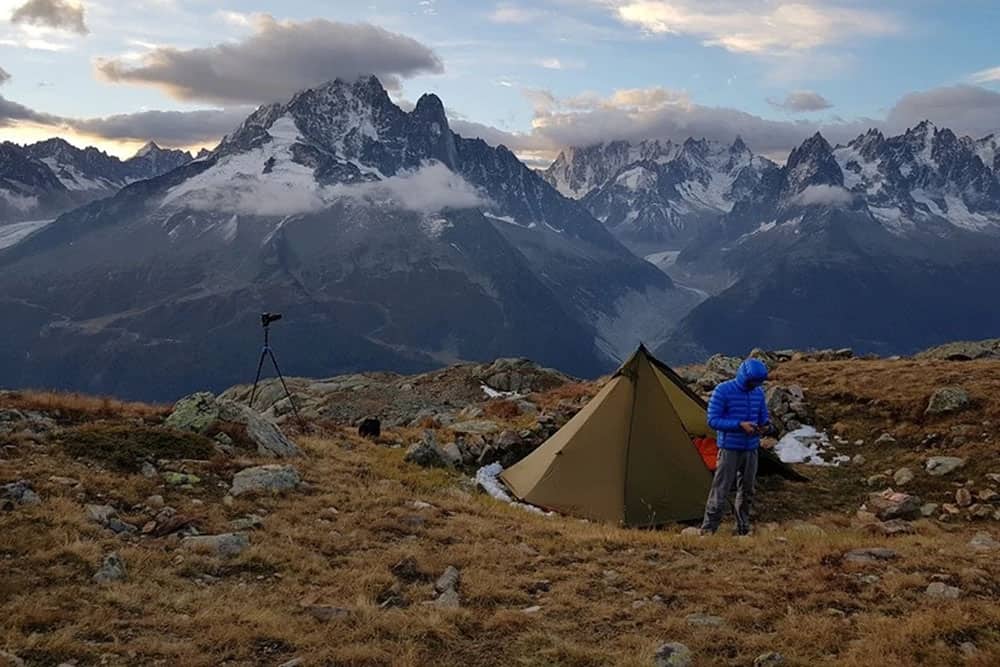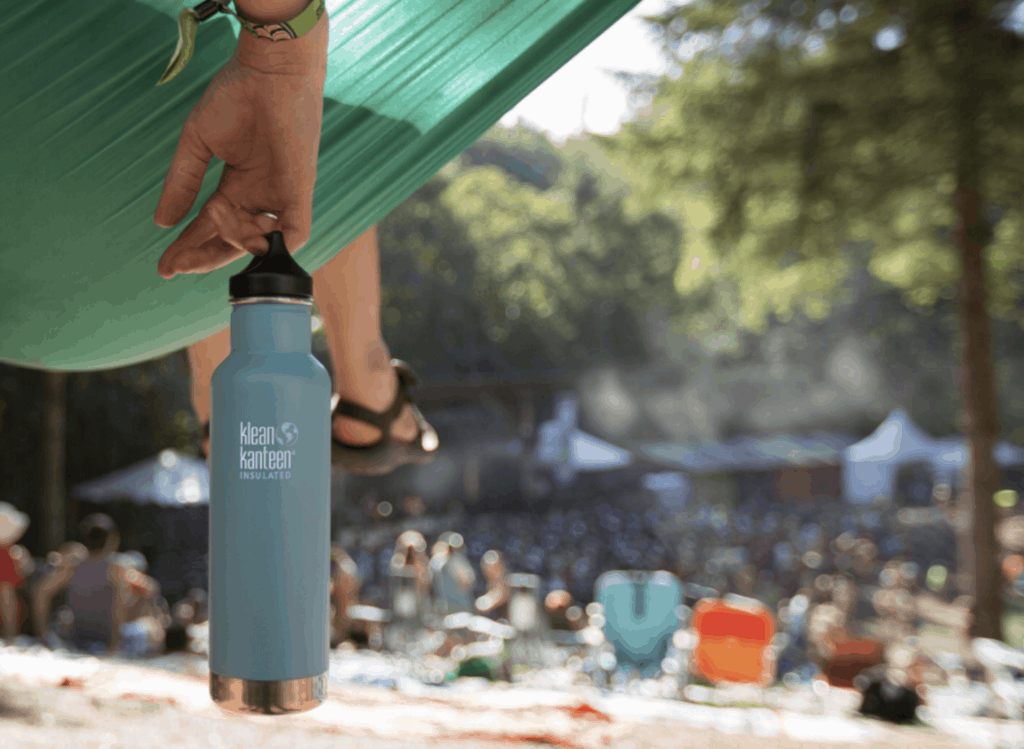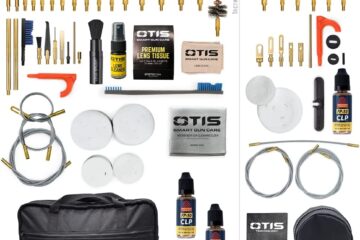When it comes to hunting, you need a rifle that will get the job done. Whether you are chasing a bull elk or a whitetail buck, you need a rifle that will perform every time. When deciding what rifle is best for you, there are a couple of factors to consider including weight and durability. Choosing the right rifle is important both to increase your odds of success and to preserve the integrity of the hunt.
Below we are going to take a look at the the best hunting rifles on the market today.
1. Tikka T3x Superlite
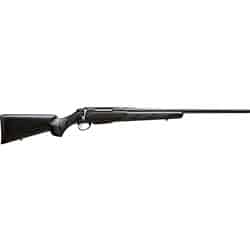
Click here for the lowest price
The Tikka T3 Lite has become a popular choice with hunters due to its reasonable price, high accuracy and aesthetic qualities. The stock is fashioned from all-weather synthetic material that is light and durable. It has a low angle grip that traditionalists love and there’s enough power to take down good sized game with one well placed shot. In spite of the fact that it’s 40 inches long it tips the scales at a remarkably svelte 5.9 pounds.
Specs
- Model – T3x Superlite
- Capacity – 3+1
- Cartridge : 7mm Remington Magnum
- Overall Length- 44.5in
- Barrel length – 24.3
- Finish – Matte Stainless
- Weight – 6.7lbs
2. Weatherby Vanguard
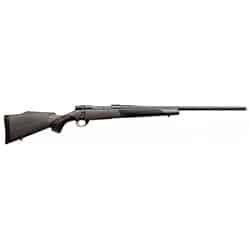
Click here for the lowest price
The Weatherby Vanguard will be familiar to veteran hunters as a reliable and affordable alternative to the company’s more expensive Mark V. With guaranteed Sub-MOA accuracy and considerable power, however, it never feels like a step down. It features a two-stage trigger, a 24 inch barrel and a lightweight polymer stock that’s durable and weatherproof. Some consider the Vanguard to be the best value out there. We’d argue that it’s at least in the conversation.
Specs
- Model – Vanguard S2
- Capacity – 5 + 1
- Cartridge type – .30-06
- Overall length – 44 in
- Barrel – 24 in
- Finish – Matte blue
- Weight – 6.75 lb
3. Remington Model 700 SPS Varmint
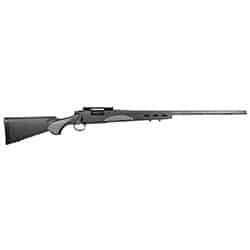
Click here for the lowest price
The 700 from Remington is another classic Varmint rifle that’s not shy about stepping up in weight class. With the right ammo it will allow for clean, humane takedowns of the largest elk. The action of the bolt is sure and true, accuracy is spot on and the robust barrel will handle repeated fire with aplomb. Another outstanding value for the budget-conscious hunter.
Specs
- Model – 700 SPS Varmint
- Capacity – 5 rounds
- Cartridge type – 223 Remington
- Overall length – 46.5 in
- Barrel – 26 in
- Finish – Blue
- Weight – 8.5 lbs
4. Browning X-Bolt Hell’s Canyon
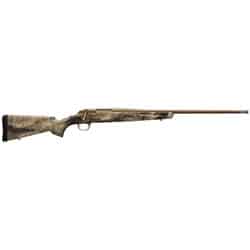
Click here for the lowest price
Browning hit one out of the park with their X-Bolt Hell’s Canyon. This is a gem of a rifle that’s deadly accurate at distance and features A-TACS AU camo that lets you meld into the background like a cuttle fish on a coral reef. The rifle is surprisingly light at just over 6 1/2 pounds, is well-balanced and perfect for big game hunters who need dependable performance. The burnt bronze finish won’t be to everyone’s liking but it gets the job done.
Specs
- Model – X-Bolt Hell’s Canyon
- Capacity – 3 + 1
- Cartridge : 300 Winchester Magnum
- Overall length – 46.75 in
- Barrel length – 26 in
- Finish – Burnt bronze Cerakote
- Weight – 6.75 lb
5. Kimber Montana
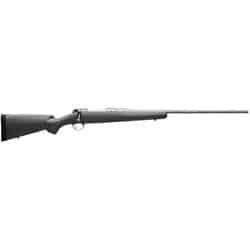
Click here for the lowest price
The Kimber Montana offers a few more features than the company’s popular Tikka models. There’s a Kevlar/carbon fiber stock that’s lightweight and will outlast you, stainless steel action and a threaded match grade barrel (1) for outstanding accuracy. The pillar and glass bedding makes for a light but rigid frame and the gun is really well balanced and easy to wield. It costs a bit more than the Tikka but there are plenty who think it’s worth the stretch.
Specs
- Model – Montana 84M
- Capacity – 4 + 1
- Cartridge : 22 – 250 Remington
- Overall length – 41.25 in
- Barrel length – 22 in
- Finish – Stainless Steel
- Weight – 5.5 lb
6. Savage Arms Axis II XP
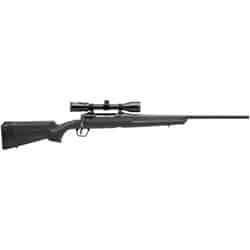
Click here for the lowest price
If you’re looking for an outstanding value in a bolt action hunting rifle you don’t have to look any further than the Savage Arms Axis II XP. It comes with a factory installed Bushnell scope, a pillar bedded barrel and smooth as butter bolt action. The synthetic stock is light and durable, the barrel 22 inches of black carbon steel and at 6.5 pounds it won’t wear you out over the course of the day. A great choice for the budget conscious.
Specs
- Model – Axis II XP
- Capacity – 4 + 1
- Cartridge : 223 Remington
- Overall length – 43.8 in
- Barrel length – 22 in
- Finish – Matte Blue
- Weight – 6.5 lb
7. Ruger American Predator

Click here for the lowest price
The Ruger American Predator is a class tried and trusted rifle. Ruger is a well known name in the gun world and has a reputation for manufacturing quality firearms. The American Predator is no different. Comes with an adjustable trigger offereing a crisp release. The rifle is very lightweight but durable coming in at 6.6 lbs. The bolt system is a 1 piece, 3 lug systems that allows ample scope clearance and smooth cycling. For a quality and reputable hunting rifle, this is a great choice.
Specs
- Model – Ruger American Predator
- Capacity – 4+1
- Cartridge : 6.5 Creedmoor
- Overall length – 42 in
- Barrel length – 22 in
- Finish – Matte Black
- Weight – 6.6 lbs
FAQs
What Should I Look for a Good Hunting Rifle?
Whether you play tennis, golf, the guitar or you hunt your racquet, club, axe or rifle should feel like a natural extension of your body. It should also be tailored to meet the specific needs of the situation. So just as golfers have different clubs for different scenarios hunters need to make sure they have the right rifle for the type of hunting they plan to do. Here are some of the things you should consider when shopping for a new hunting rifle.
Single or Two-stage Trigger
In the days of yore there was only the single stage trigger. These had centuries of history behind them but they were heavy and often wound up screwing with the accuracy of your shot. Not so many years back manufacturers began to experiment with a lighter trigger. But this led to safety concerns and more then a few accidents. Today, we have a choice. We can either go with the single stage heavy trigger, or the two-stage trigger that gives the hunter the option of switching between the heavy and light triggers as circumstances demand.
Wood or Synthetic Stock
Everyone loves the way natural wood looks and feels. What they don’t like are cracks, dings and discoloration. Still, everything comes at a price and there are a lot of hunters that won’t use a rifle if it doesn’t have a beautiful walnut stock. The synthetic stock can’t compete with a walnut stock from an aesthetic standpoint. So we’re not even going to try to convince you otherwise. But the synthetic stock will be there for you year after year in any kind of conditions without fail. But that’s not where the advantages end with synthetic stocks (3). They’re also lighter than wooden stocks. So if you’ve been tracking that buck for miles the lighter gun won’t wear on you. And they’re cheaper for manufacturers to make. Which reduces the cost of the rifle.
Barrel Length
Shorter barrels are becoming more popular but longer barrels tend to provide greater accuracy. It is also widely believed that the longer barrel can result in a more powerful shot. Although you’re likely to find people who will argue that point. Still, you’ll find plenty of manufacturers who continue pumping out 26 and 28 inch barrels and plenty of hunters snapping them up. Shorter barrels tend to makes for a lighter and less cumbersome rifle that is easier to get in an out of your vehicle. Also, short barrel rifles are typically better balanced than long barrel rifles. While short barrels haven’t exactly taken over the hunting landscape just yet they are making inroads and manufacturers are producing more short barrel rifles than ever these days.
The Recoil Pad
Just as it’s not the fall that kills you, it’s that sudden stop at the end, so too it’s not the shot that screws up your shoulder, it’s the recoil (4). A recoil pad is a simple device that slips over the end of the stock and provides a bit of padding to absorb some of that recoil and save your shoulder for another day. It’s one of those simple things that an really ramp up your enjoyment of the hunt. While Daniel Boone would probably scoff at such an affront to his manliness more and more rifle owners are opting for recoil pads.
Telescopic or Iron Sights
Back in the day rifles came with iron sights and that was that. But because life is all about choice at this point in history you now get to choose between iron sights and telescopic sights. While iron sights have a certain kind of historical cache most hunters aren’t willing to miss the target in the name of cache. Scopes (telescopic sights) magnify the target and allow you a much more precise shot. But they can sometimes be more of a hinderance than a help when the weather turns south. And they don’t lend themselves to rapid firing. Still, if you are likely to spend most of your time in one fixed position waiting for the game to come to you there’s no reason you shouldn’t use a scope.
Action
The best rifles for hunting large game typically have a bolt or lever action. They’re light (especially the lever action rifles), safe and easy to use. And anything that makes the hunt easier is generally a positive. These days, it’s not all that unusual for people to use semi-automatics(Ar-15’s) for hunting. However, their action is much more complex and as such is typically the kind of acquired taste that only appeals to veteran hunters who’ve seen it all. Beginners will probably want to stick with bolt action rifles for safety reason. And also because they tend to be a little more accurate than level action rifles. A little.
Weight
This is a purely practical consideration but one you’d do well to keep in mind. Traditional rifles have long barrels, are fashioned from steel and walnut and can weigh 8 pounds or more. So if you’re a traditionalist you’ll need to be in great shape. Contemporary designs on the other hand often feature lightweight aircraft grade aluminum (5), lightweight synthetic stocks and shorter barrels. Such a rifle might weigh only 5 pounds. Maybe even a bit less. A lot of deer hunters these days are opting for the lightweight rifles simply because they won’t weigh them down over the course of the hunt.
How to Choose a Scope for a Hunting Rifle?
As we said earlier most hunters are going to choose a scope over iron sights. Unlike iron sights that are what they are, scopes come in all kinds of sizes and configurations. Here are some of the basics you’ll want to keep in mind when looking for a scope for your hunting rifle.
- The Numbers – When you look at the numbers of the scope the first numbers indicate its magnification. For instance, if the scope is a 3-9X30 that means the scope will zoom from 3 times magnification up to 9 times magnification. The number after the X indicates the diameter of the lens in millimeters. So this lens would be 30 mm in diameter.
- Magnification – The higher the magnification the bigger the lens is going to be and the bigger the scope is going to be. So while it may be tempting to get that 32X scope to impress your buds, it’s going to effect both the balance and weight of your rifle. If you plan on tracking and hunting down your quarry 4X to a maximum of 9X magnification should be fine. However, if you plan to set up a blind and sit and wait then you can go with a larger magnification.
- Size of Lens – When we say “lens” in this case we’re talking about the forward facing glass on the scope. This is what lets light into the scope and more light is always a good thing. As is the case with cameras the larger the lens in your scope the clearer the image will be. But, just like with a camera, the larger the lens the more unwieldy your scope will be. You’re also likely to need a bigger mount to accommodate it.
- The Reticle – The reticle is commonly known as the crosshairs. They are a pair of lines that intersect at the center of the image you see through the scope. The reticle is there to provide you with a precise point to aim at. The most common form of reticle on scopes today is the Duplex reticle (6). They’re typically good in both bright and low light so you don’t have to give up on those long range shots when the weather closes in. You can also use the reticle to determine approximately how far away the target is by calculating sub-tension (7).
- Minutes of Angle – Minutes of angle or MOA refers to a measurement that is dialed into the scope in order to adjust the point of impact to compensate for distance. Minute of angle is assigned a consistent value of 1 inch for every 100 yards of distance. Typically you’ll adjust the scope by 1/4 inch for every 400 yards. Every minute of angle you adjust for on the scope will correlate to a minute of angle on the target.
- Turrets – The turrets are those knobs on the top and sides of your scope. Their job is to help you produce a more accurate shot by allowing you to adjust for elevation and windage. You can find turrets that will allow you to adjust for other factors, but windage and elevation are the two primary ones. Let’s take a quick look at them now:
- The windage turret – The windage turret is used for horizontal adjustment of the scope. It is usually located on the right hand side of the scope. This adjustment allows you to compensate for the wind in your shot (8) by adjusting your vision left or right of what would normally be true aim. When done right the windage turret can take the wind out of the shooting equation.
- The elevation turret – You will find the elevation turret on the top of your scope. Use it to adjust the vertical alignment of your scope. This is important because the bullet does not follow a straight path. It arcs slightly as it flies. By adjusting the elevation turret you are aligning your sight to the eventual point of impact.
Final Thoughts
There are a lot of things that go into finding the right rifle for your hunting purposes. From the material used for the stock, to the length of the barrel, the weight of the gun and all the various aspects of the scope. In addition, whether you’re hunting rabbits, deer or moose the gun needs to be appropriate to the quarry and needs to hold up to the environmental conditions at the same time. So if you want to give yourself the best chance of success remember not just any old rifle will do. After all, we live in an era of unprecedented choice. Take advantage of it and find exactly the right rifle for you.
